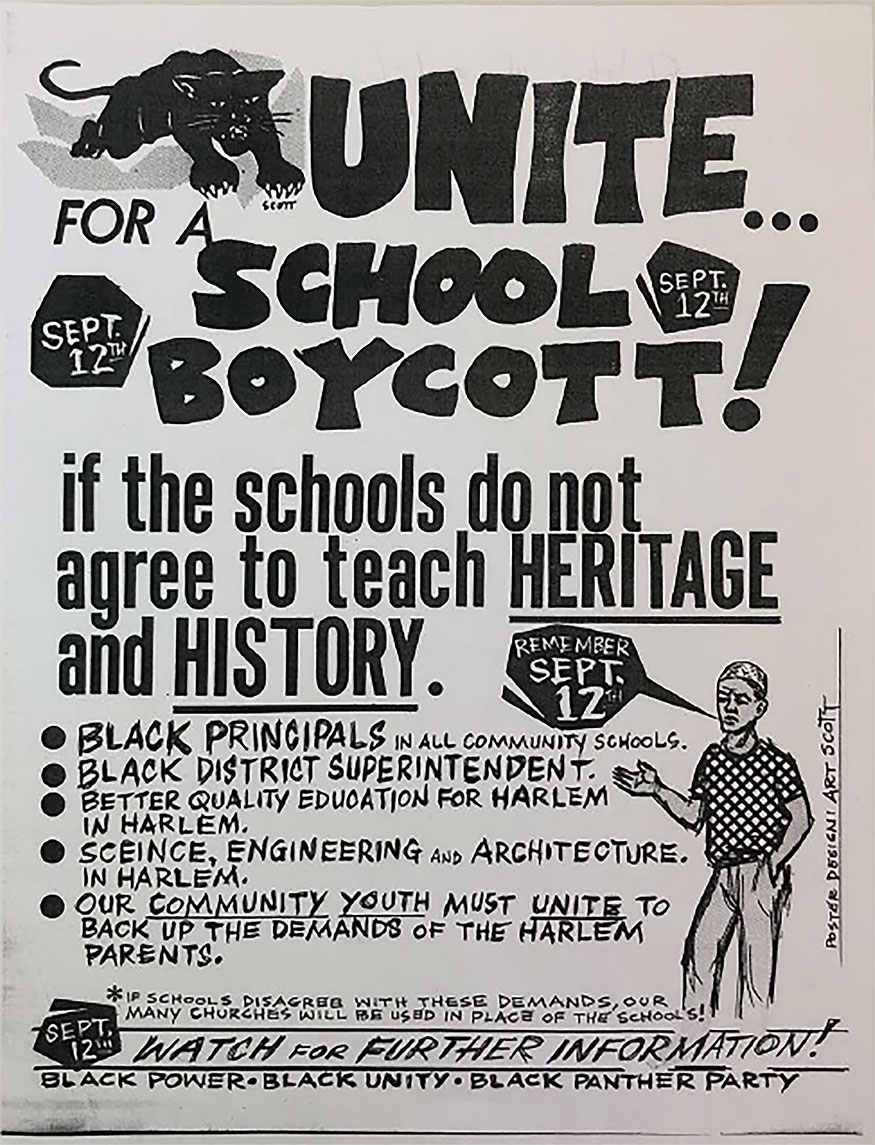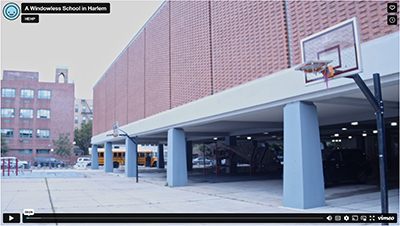Operation Shut Down Flier

Date: undated, c. September 1966
Caption: The Black Panther Party distributed fliers in Harlem to spread the word about their planned one-day boycott of I.S. 201.
Civil rights organizers in Lowndes County, Mississippi, chose the image of a black panther as their symbol. They were fighting for voting rights and democratic power as part of the Mississippi Freedom Democratic Party. For decades, although Black voters were the majority of the population there, they had been locked out of voting by racist restrictions.
Harlem is a long way from Lowndes County, but the idea of democratic power and self-determination was persuasive to Black people in both places. With a focus on self-determination, a Black Panther Party of Harlem started in the summer of 1966.1 The Party explained that “wherever our people comprise a majority of the population (like Harlem…) they should control that area.” The Party defined itself as “a social MOVEMENT of BLACK people addressing itself specifically to the problems faced by black people living in the midst of white America.” And like the Mississippi Freedom Democratic Party, they made a black panther their symbol.
The Black Panther Party focused on many topics, including police brutality, housing, and keeping money within the Black community. But education was a key focus, as “our children are the future of our people.”2
When Intermediate School 201 opened in the fall of 1966, the Black Panther Party called for Operation Shut Down to boycott the school for a day. Despite the Board of Education’s promises, the new school was segregated, and the community was upset by the fact that the building lacked any windows to let students see out, or parents see in. Both showed the need for leadership that is “responsive to the needs of the community,” after a history of “irresponsible and non-concerned leadership” that had been ”detrimental to our young people.”3
-
To read more, see “Black Power,” in #SchomburgSyllabus, ed. Schomburg Center for Research in Black Culture, https://www.nypl.org/schomburgsyllabus/black-panther-party. ↩︎
-
Black Panther Party, Harlem Branch, ”All Power to the People,” undated, Black Panther Party Harlem Branch Files, Schomburg Center for Research in Black Culture, New York Public Library, Box 1, Folder 8, https://archives.nypl.org/scm/20948. ↩︎
Watch: A Windowless School in Harlem

Categories: K-12 organizing, Manhattan, community activism
Tags: Harlem, self-determination, Black people, protest, curriculum, photography, imagery, and visual representation, organizing
This item is part of "The Black Panthers" in "Boycotting New York’s Segregated Schools"
Item Details
Date: undated, c. September 1966
Creator: Black Panther Party Harlem Branch
Copyright: Public domain
How to cite: “Operation Shut Down flier,” Black Panther Party Harlem Branch, in New York City Civil Rights History Project, Accessed: [Month Day, Year], https://nyccivilrightshistory.org/gallery/black-panthers-1.
Questions to Consider
- Based on the fliers, what were the Panthers hoping to achieve through this boycott?
- One of the fliers calls for unity, including “candy store owners, beauticians, barbers, restaurants, street gangs, organized black community youth, welfare, black community fathers and mothers, pool hall managers.” Why do you think this call for unity was important, and why did they mention these groups in particular?
- How does this example of Black educational activism organized by the Black Panther Party compare to the 1964 and 1965 school boycotts?
- What connections do you see between the Panther’s 1966 boycott and the present day?
References
How to Print this Page
- Press Ctrl + P or Cmd + P to open the print dialogue window.
- Under settings, choose "display headers and footers" if you want to print page numbers and the web address.
- Embedded PDF files will not print as part of the page. For best printing results, download the PDF and print from Adobe Reader or Preview.
